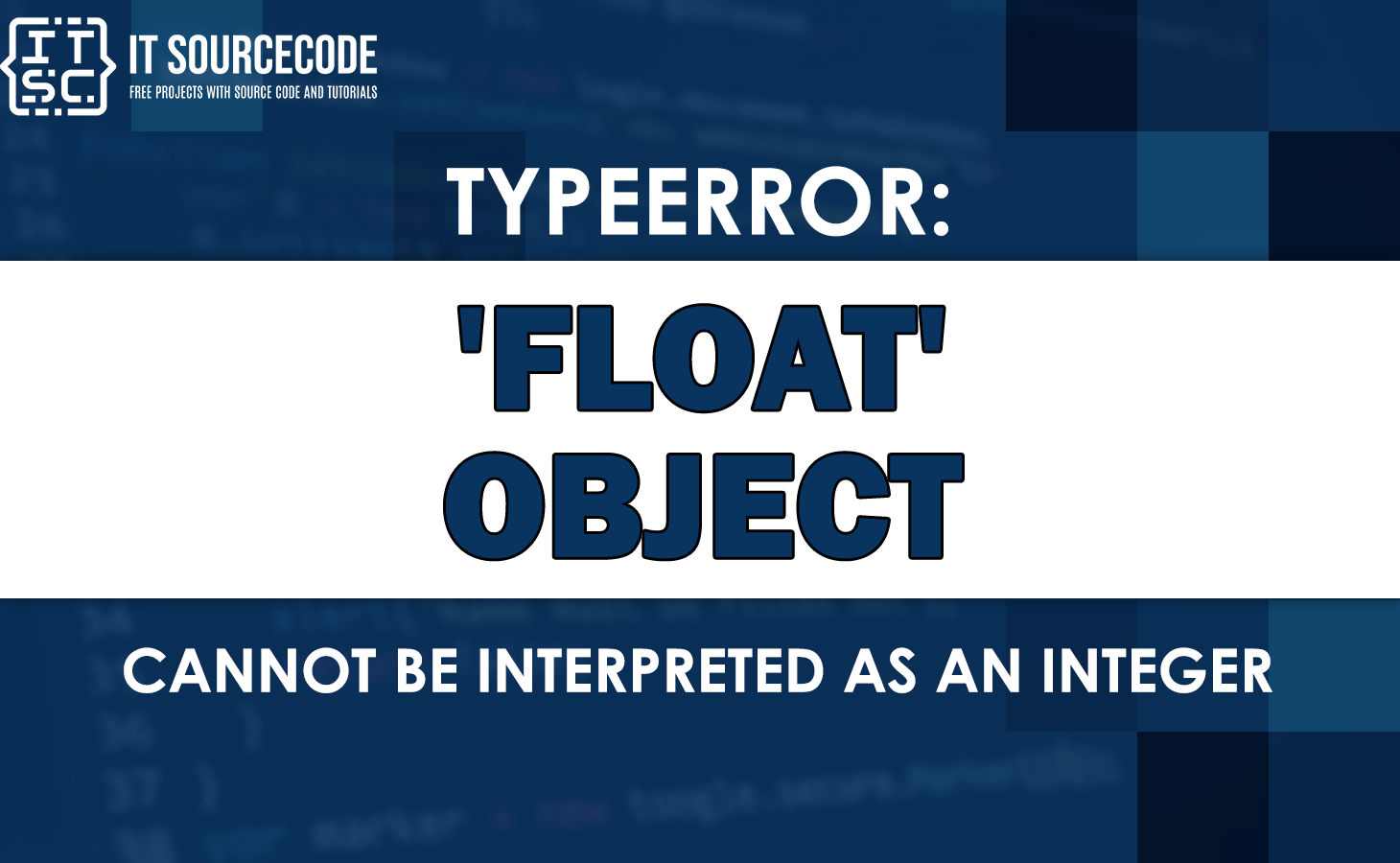Having trouble figuring out the typeerror: ‘float’ object cannot be interpreted as an integer?
Read through the end of this article and let this be an aid to reduce your worry.
In this article, you will see information about this error as well as how to fix it.
To begin with, let us know and understand this error.
What is typeerror: ‘float’ object cannot be interpreted as an integer?
The typeerror: ‘float’ object cannot be interpreted as an integer is an error message in Python.
The error message mentioned above can be encountered by developers working on a project.
This error occurs when you attempt to use a float value in a function that expects an integer.
What is a “float”?
A floating-point number, or “float” in programming, is a data type that represents decimal numbers.
Floats are single, indivisible values. They are also used for scientific notation.
Back to the issue, here is a sample code that triggers this error:
sample = 20.00
for i in range(sample):
print(i)Error:
Traceback (most recent call last):
File "C:\Users\path\PyProjects\sProject\main.py", line 3, in <module>
for i in range(sample):
^^^^^^^^^^^^^
TypeError: 'float' object cannot be interpreted as an integerNow let us move on to our solution.
Typeerror: ‘float’ object cannot be interpreted as an integer – SOLUTION
The following are the solutions for solving the typeerror: ‘float’ object cannot be interpreted as an integer in different scenarios.
SCENARIO 1
Using a float in a range() function.
In this scenario, let us use the sample code above that triggers this error.
Solution: Convert the float into an integer.
sample = 20.00
for i in range(int(sample)):
print(i)Output:
0
1
2
3
4
5
6
7
8
9
10
11
12
13
14
15
16
17
18
19SCENARIO 2
Using float in a hex() function.
Example code:
sample = 20.23
print(hex(sample))Error:
Traceback (most recent call last):
File "C:\Users\path\PyProjects\sProject\main.py", line 2, in <module>
print(hex(sample))
^^^^^^^^^^^
TypeError: 'float' object cannot be interpreted as an integerSolution:
sample = 20.23
print(hex(int(sample)))Output:
0x14SCENARIO 3
Using float in a bin() function.
Example code:
sample = 20.23
print(bin(sample))Error:
Traceback (most recent call last):
File "C:\Users\path\PyProjects\sProject\main.py", line 2, in <module>
print(bin(sample))
^^^^^^^^^^^
TypeError: 'float' object cannot be interpreted as an integerSolution:
sample = 20.23
print(bin(int(sample)))Output:
0b10100See also: Typeerror: numpy.float64 object cannot be interpreted as an integer
Tips to avoid getting Typeerrors
The following are some tips to avoid getting type errors in Python.
- Avoid using the built-in data types in Python in the wrong way.
→ Be sure that your variables and data structures are using the correct data types.
- Always check or confirm the types of your variables.
→ To check the types of your variables, use the type() function.
This will allow you to confirm if the type of your variable is appropriate.
- Be clear and concise when writing code.
→ Being clear and concise when writing your code can help you avoid typeerrors.
It is because it will become easier to understand.
- Handle the error by using try-except blocks.
→ Try using the try-except blocks to catch and handle any typeerror.
- Use the built-in functions of Python if needed.
→ Use built-in functions such as int(), str(), etc. if you need to convert a variable to a different type.
FAQs
Typeerror is an error in Python that arises when an operation or function is applied to a value of an improper type.
This error indicates that the data type of an object isn’t compatible with the operation or function that is being used.
Python is one of the most popular programming languages.
It is used for developing a wide range of applications.
In addition, Python is a high-level programming language that is used by most developers due to its flexibility.
Conclusion
In conclusion, the typeerror: ‘float’ object cannot be interpreted as an integer is caused by using a float in a function that expects an integer.
You can fix this error by converting a float value into an integer.
By following the guide above, you will surely solve this error quickly.
That is all for this tutorial, IT source coders!
We hope you have learned a lot from this. Have fun coding.
Thank you for reading! 😊

